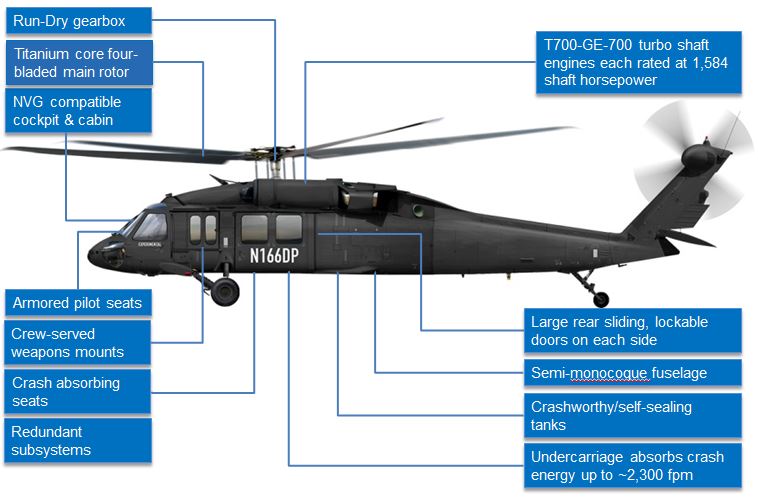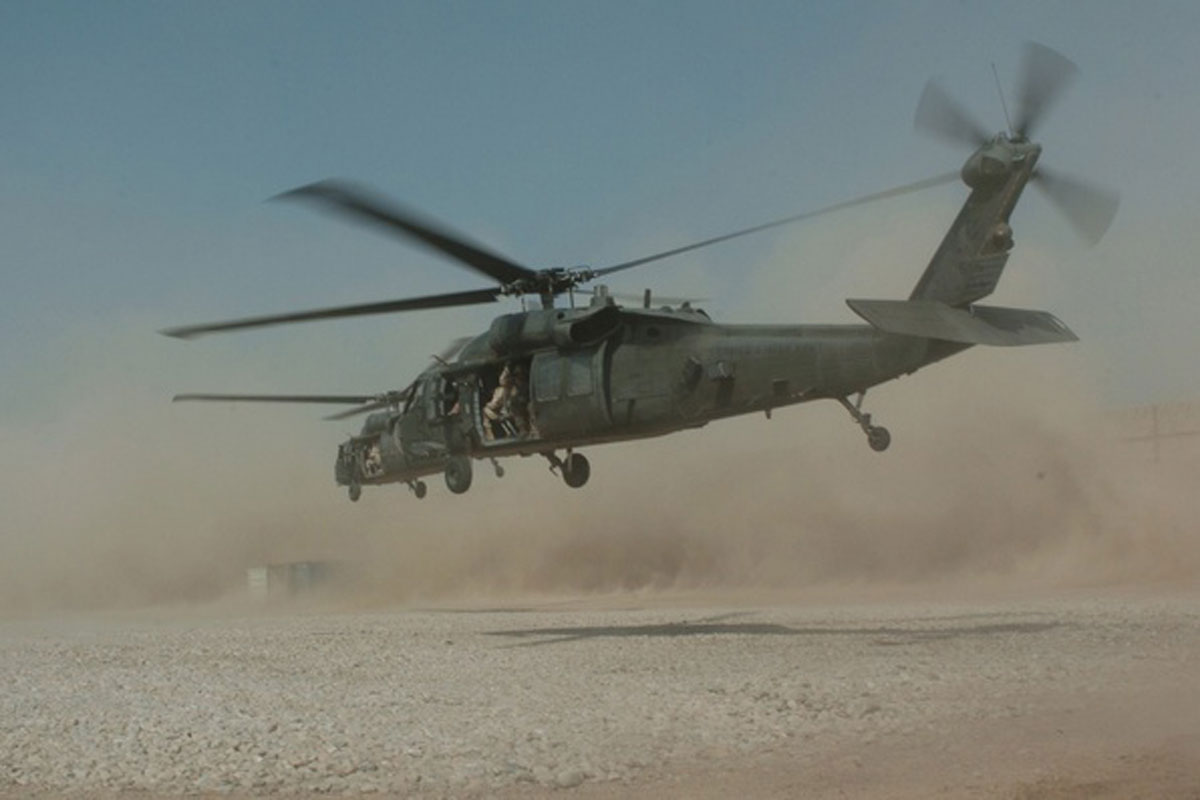Unlocking Peak Performance: UH 60 Helicopter Maintenance Guide
Unlocking Peak Performance: UH 60 Helicopter Maintenance Guide
Blog Article
Understanding the Mechanics and Engineering Behind Uh 60 Helicopters
The UH-60 helicopter, commonly referred to as the Black Hawk, stands as a pinnacle of modern-day rotorcraft innovation, personifying a blend of durable engineering and elaborate technicians. From its creation to its existing models, the evolution of this airplane showcases a blend of development and usefulness. As we peel back the layers of the UH-60's style, a globe of detailed systems and meticulous engineering emerges. Recognizing the auto mechanics and design behind this versatile aircraft reveals a realm where accuracy fulfills power, and where each part plays an important duty in achieving flight.
History of UH-60 Helicopters
The background of UH-60 helicopters traces back to the late 1970s when the United States Army sought a sophisticated and functional energy helicopter to change its aging fleet. In reaction to this requirement, the Sikorsky Airplane Company established the UH-60 Black Hawk helicopter. Introduced in 1979, the UH-60 swiftly became a staple in armed forces operations due to its impressive capacities.
The UH-60 was developed to master a range of missions, consisting of troop transportation, medical discharge, digital warfare, and unique operations. Its ability to adjust to different duties made it a beneficial possession to the U.S. uh 60. Military and other army forces all over the world
For many years, the UH-60 platform has actually undergone numerous upgrades and variations to boost its performance and equal evolving goal requirements. These helicopters have actually seen substantial solution in disputes such as the Gulf Battle, Afghanistan, and Iraq, showcasing their dependability and versatility in varied operational atmospheres. The UH-60's abundant history is a testimony to its enduring tradition as a premier energy helicopter.

Engine and Power Equipments
Making use of sophisticated propulsion technology, UH-60 helicopters are geared up with sophisticated engine and power systems to make sure ideal performance and reliability in a series of operational scenarios. The UH-60, generally referred to as the Black Hawk, is powered by 2 General Electric T700-GE-701D engines, each efficient in supplying up to 1,940 shaft horse power. These turboshaft engines supply the needed thrust for the helicopter to perform its goals successfully, consisting of troop transport, clinical emptying, and combat assistance.

Rotor System and Aerodynamics
How do the blades system and the rules of aerodynamics of UH-60 helicopters add to their functional performance and trip abilities? The rotor system of the UH-60 helicopter plays a critical duty in supplying lift and propulsion. The UH-60 includes a four-bladed, completely verbalized rotor system that enables high ability to move and security throughout flight. This design enables the helicopter to perform a wide variety of goals, from transportation and medical evacuation to combat procedures.
Aerodynamics additionally play a crucial function in the performance of UH-60 helicopters. The structured fuselage and blades blade layout minimize drag, allowing the helicopter to attain greater speeds and better gas effectiveness. The aerodynamic design of the UH-60 additionally contributes to click for more its ability to run in diverse environmental problems, including hot temperatures and high elevations.
Avionics and Flight Control Systems

In its intricate sychronisation with the blades system and the rules of aerodynamics of UH-60 helicopters, the avionics and flight control systems develop an essential network of innovations forming the airplane's operational abilities. In the UH-60, these systems consist of electronic display screens, communication radios, GPS navigation, weather condition radar, and auto-pilot systems.
The flight control systems of the UH-60 are in charge of converting the pilot's inputs right into the suitable changes to the rotor system, making sure secure trip and maneuverability. These systems include hydraulic actuators, servos, and computer systems that work with each other to control the tail and primary rotors, as well as various other trip control surface areas. By precisely taking care of the helicopter's trip dynamics, these systems allow pilots to execute a wide variety of missions, from transport and search-and-rescue to combat operations, with precision and confidence.
Role and Applications in Aviation
The function and applications of avionics and flight control systems in air travel are important to making certain the safe and efficient procedure of aircraft, including UH-60 helicopters. Avionics systems in UH-60 helicopters encompass a series of digital systems that help in navigating, interaction, surveillance, and regulating visit this site right here numerous aircraft functions. These systems consist of electronic screens, autopilot systems, communication radios, general practitioner navigating tools, and weather condition radar. Flight control systems play a vital duty in steering the helicopter airborne, keeping security, and making sure accurate activities. The fly-by-wire innovation made use of in modern UH-60 helicopters translates pilot inputs right into digital signals, which are then translated by the flight control computers to adjust the aircraft's control surfaces. In addition, these systems include safety attributes such as auto-pilot modes, surface understanding warning systems, and security augmentation systems to boost the overall safety and security and operational capacities of the UH-60 helicopters in different goals, including army transport, clinical evacuation, search and rescue, and airborne firefighting.
Conclusion
Finally, the UH-60 helicopter is a functional airplane with a rich background and advanced design. Its engine and power systems, blades system, the rules of aerodynamics, avionics, and flight control systems all work with each other to make it a effective and trusted machine. The UH-60's role and applications in air travel are substantial, ranging from army operations to browse and rescue missions. Its proceeded development and usage demonstrate its relevance in the field of air travel (uh 60).
In its elaborate sychronisation with the rotor system and the rules of aerodynamics of UH-60 helicopters, the avionics and trip control systems develop a critical network of modern technologies forming the airplane's operational abilities.The flight control systems of the UH-60 are responsible for translating the pilot's inputs right into the ideal changes to the blades system, making certain secure trip and maneuverability. Avionics systems in UH-60 helicopters include a variety of digital systems that aid in navigation, communication, monitoring, and regulating various aircraft functions. Furthermore, these systems incorporate security features such as auto-pilot settings, terrain recognition alerting systems, and stability enhancement systems to improve the overall safety and security and operational capabilities of the UH-60 helicopters in numerous objectives, consisting click to read of army transport, clinical emptying, search and rescue, and airborne firefighting.
Its engine and power systems, rotor system, aerodynamics, avionics, and trip control systems all work with each other to make it a trusted and effective maker.
Report this page